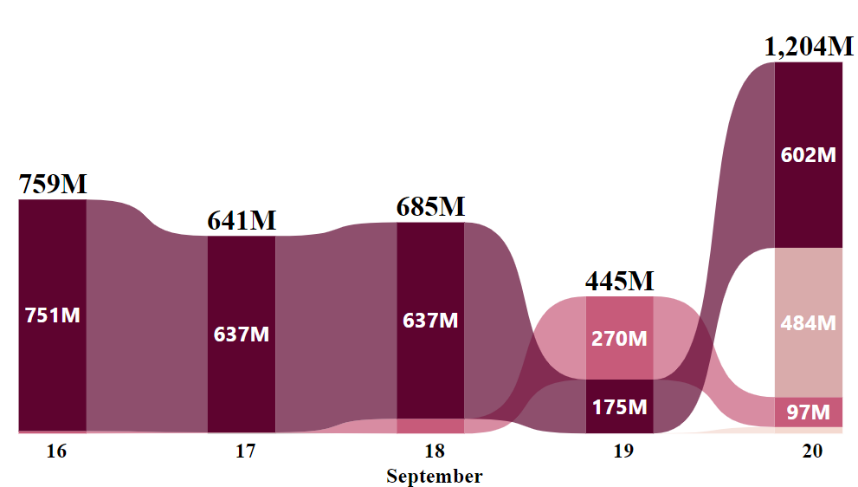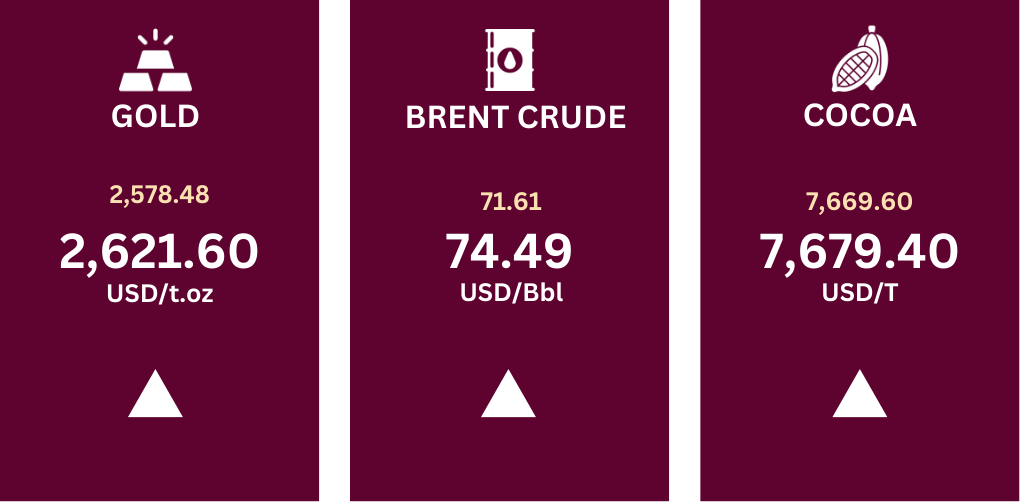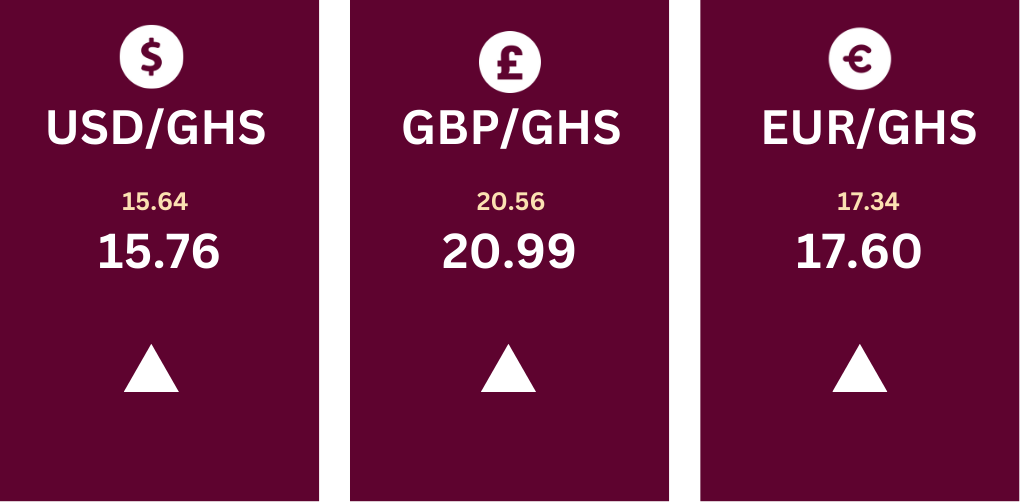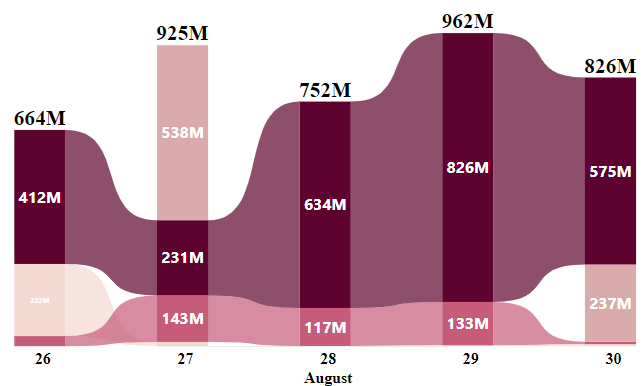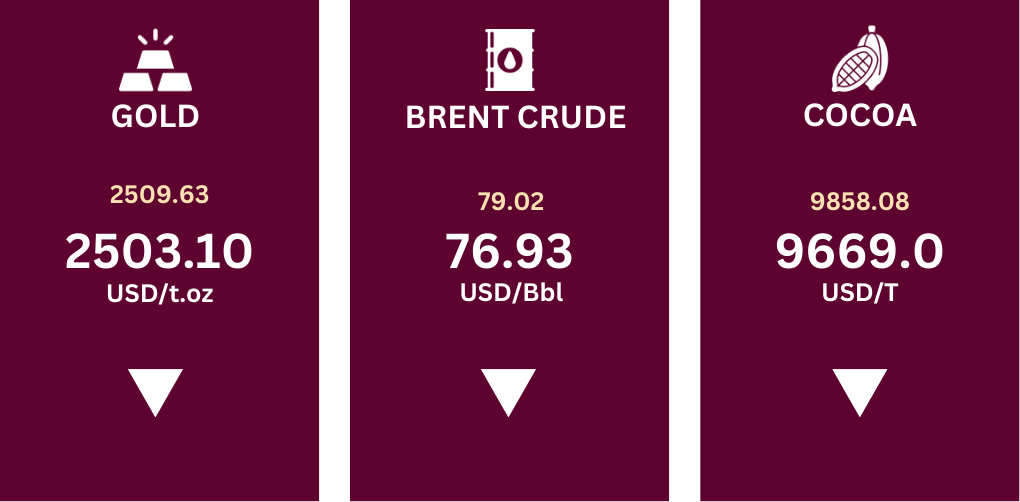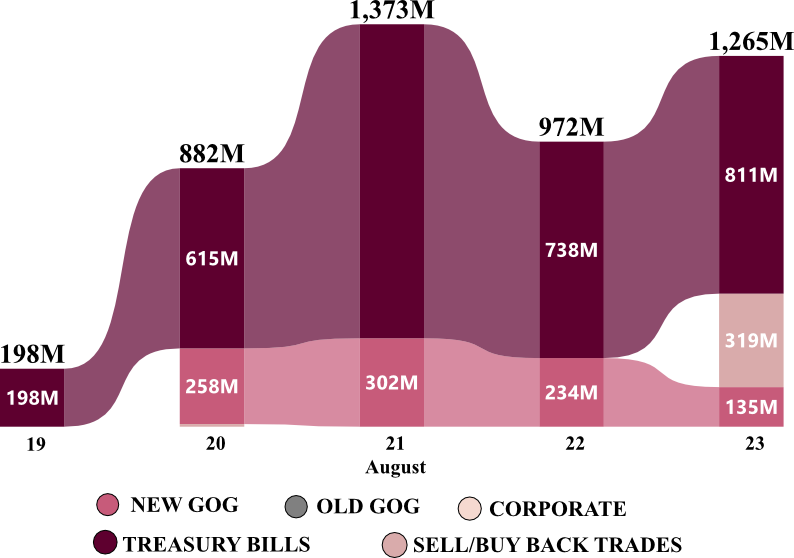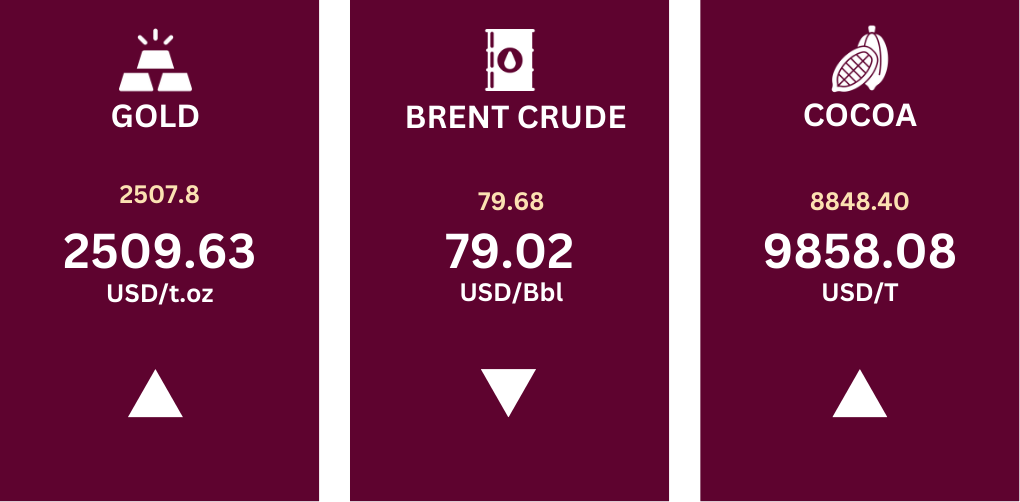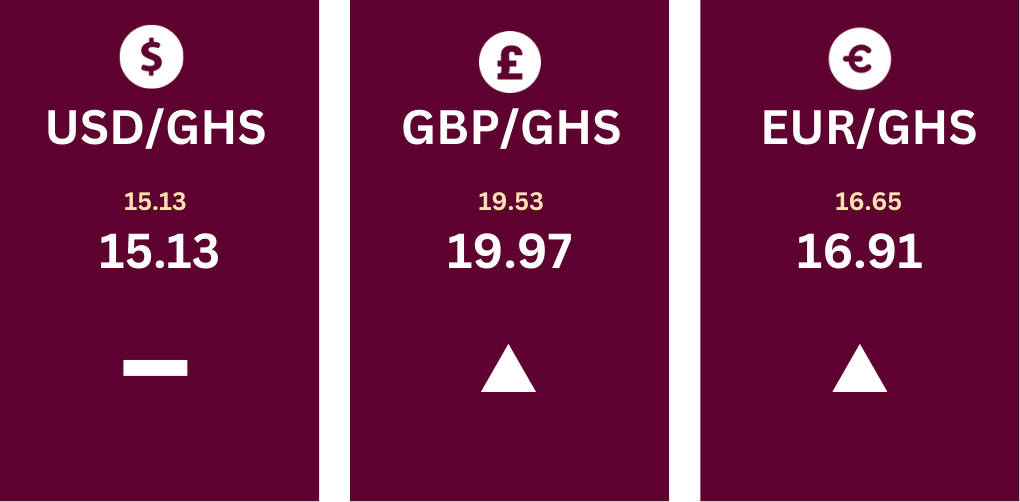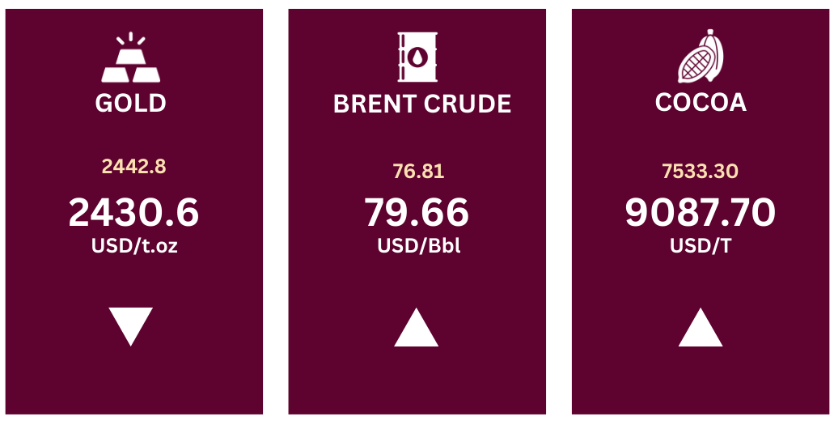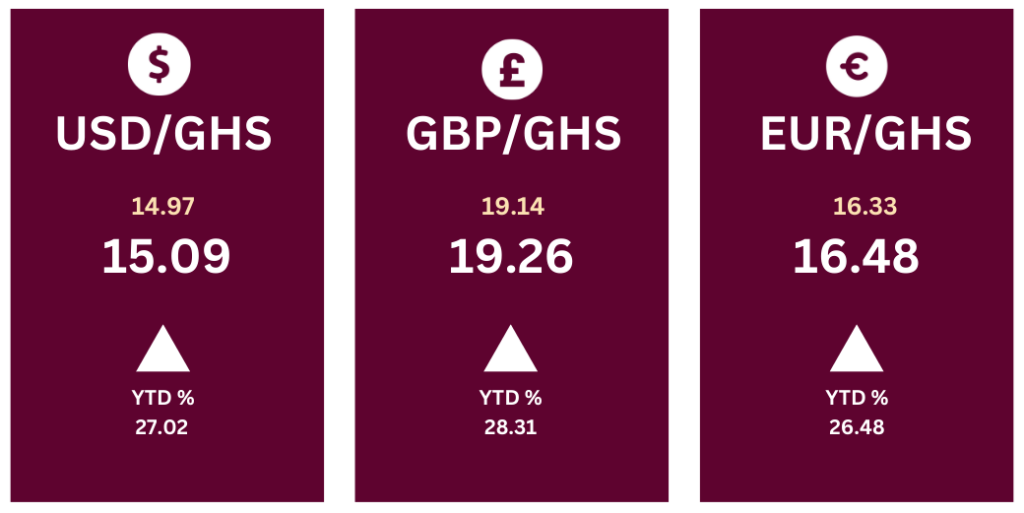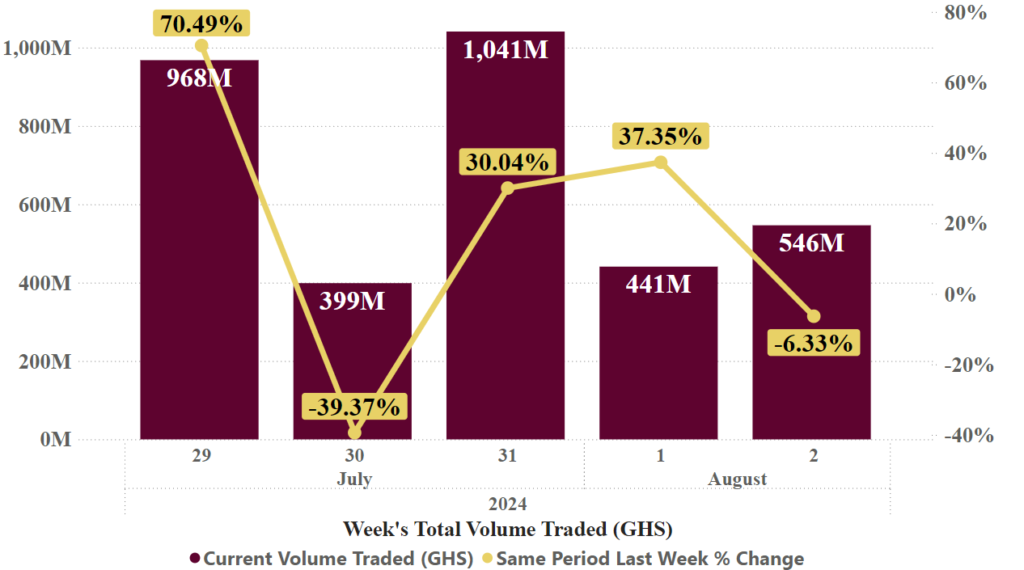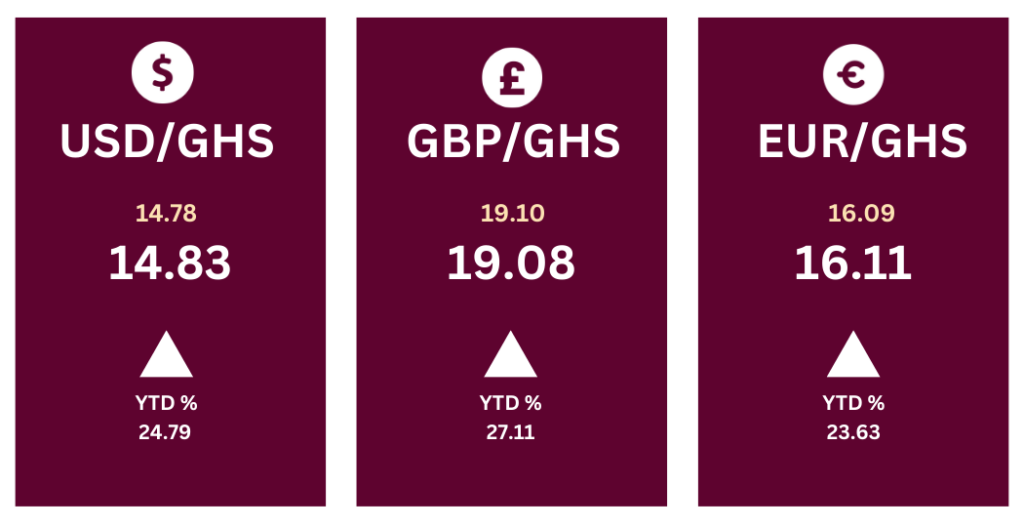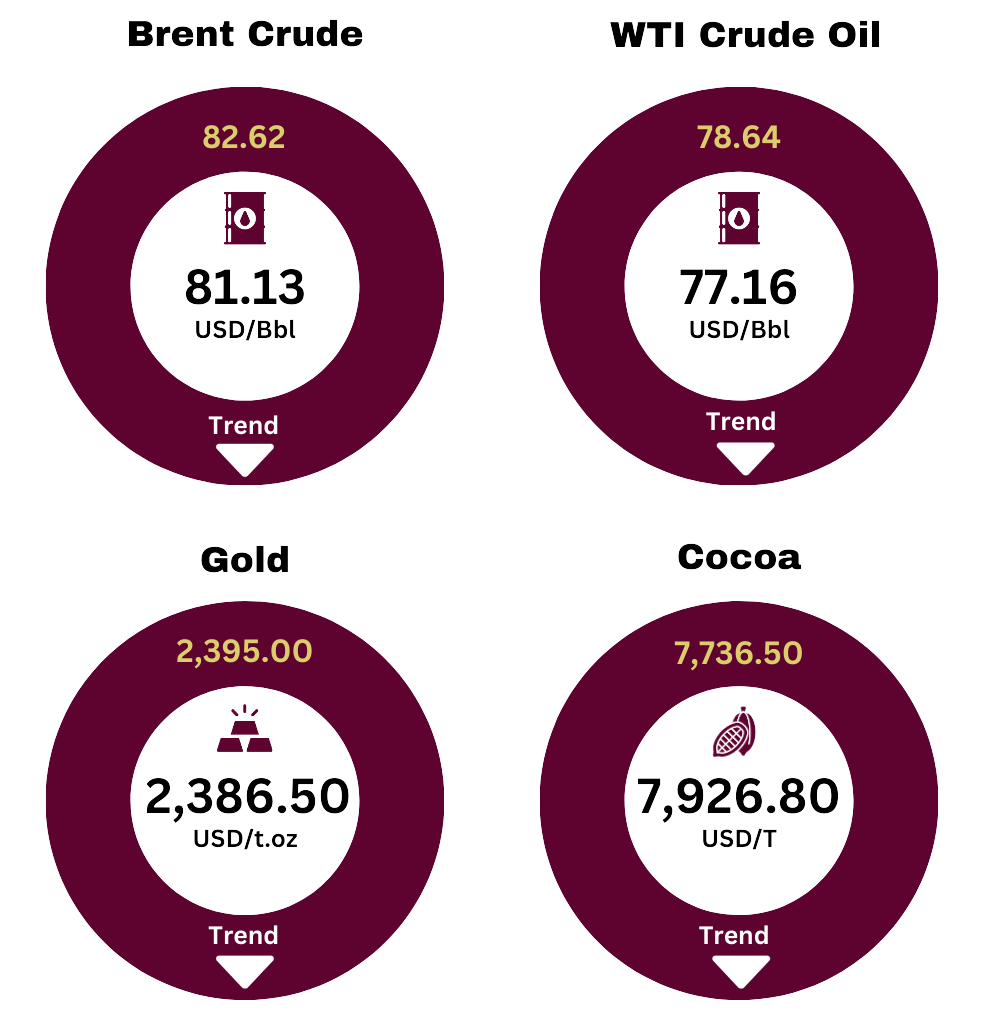WEEKLY FINANCIAL MARKET REPORT AS OF 1ST NOVEMBER 2024
KEY HEADLINES & INSIGHTS
T-bills marginally oversubscribed by GH¢65 million in latest auction as interest rates reach 29% (GhanaWeb, 2024).
The Bank of Ghana has revealed that liquidity risk remains well-contained in the banking industry, provided the Government of Ghana (GoG) bonds are liquid. (Bank of Ghana, 2024)
MTN Ghana reports GH₵12.7 billion revenue for Q3, driven by data and MoMo growth. (Daily Graphic, 2024)
This week, the local stock exchange surged, with share volume up 613%, traded value up 378%, and market cap rising 2.46% to GH₵101.94 billion.
Gold prices reaches record high of USD 2,785.4 per troy ounce.
PRIMARY DEBT MARKET ISSUANCE WEEK
In the latest trading week, interest rates on Government of Ghana (GoG) Treasury bills rose across all tenors, indicating strong investor demand for short-term instruments and potentially reflecting tighter liquidity conditions. The 91-day T-bill interest rose by 37.43 basis points, moving from 26.1901% to 26.5644%. This increase in the shortest tenor may signal higher investor-required returns in response to inflation expectations or short-term funding pressures. The 182-day T-bill also saw a notable rise of 29.37 basis points, climbing from 27.2911% to 27.5848%, as investors sought a balance between liquidity and yield.
In contrast, the 364-day T-bill experienced a more modest increase of 6.73 basis points, moving from 28.9706% to 29.0379%. This smaller shift at the longer end of the short-term curve suggests stable investor sentiment over the mid-term horizon. While demand remains robust, the flattening yield curve could imply investor confidence in lower volatility over the medium term. These upward adjustments in yields may signal tightening short-term borrowing costs and market expectations of possible monetary policy changes, with investors factoring in potential macroeconomic shifts.
| Security |
Current Wk % |
Previous Wk % |
| 91-Day GoG Bill |
26.5644 |
26.1901 |
| 182-Day GoG Bill |
27.5848 |
27.2911 |
| 364-Day GoG Bill |
29.0379 |
28.9706 |
Source(s): Bank of Ghana
GHANA FIXED INCOME MARKET VOLUME TRADED
The Ghana Fixed Income Market closed the week with a total volume traded of GH₵ 2.87 billion. A total of 6,729 trades were made of which 99.08% were Treasury bills, and 0.42% were New GoG. Bonds and Notes.
Starting at GH₵ 751 million on October 28, trading was primarily driven by Treasury Bills and newly issued Government of Ghana (GoG) Bonds and Notes. This volume dipped to GH₵ 483 million on October 29, mostly attributed to Treasury Bills.
October 30 saw an inch up in volume, led by Treasury Bills. However, trading volumes marginally fell to GH₵521 million on October 32, dominated by Treasury Bills and Sell/Buy Back Trades. The week concluded with a slight increase to GH₵555 million on November 1, where Sell/Buy Back trades and Treasury Bills were the primary contributors. Throughout the week, Treasury Bills consistently held the highest share of trading activity on the GFIM.
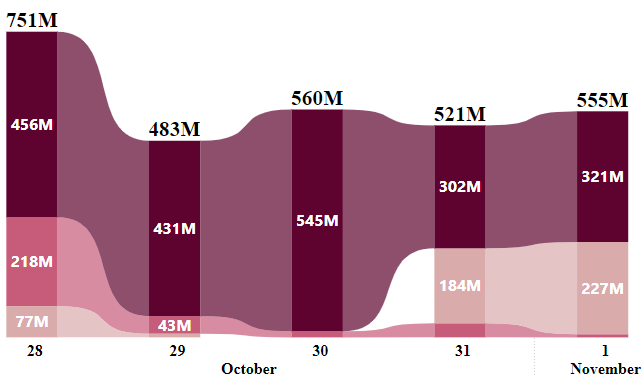

Week’s Ghana Fixed Income Market Total Volume Traded
EQUITY MARKET
This week, trading on the local stock exchange reflected an upswing performance, with total share volume surged by 613.09% to 5,717,593 shares, down from last week’s 801,810 shares. The total traded value rose by 377.73%, reaching GH₵ 61.58 million, indicating higher-value transactions. Market capitalization experienced a slight increase, closing at GH₵ 101.94 billion, up 2.46% from the previous week.
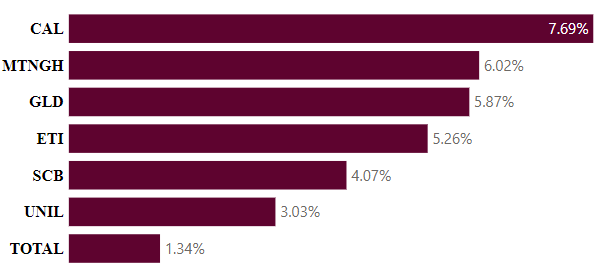
Week’s Equities Top Gainers & Laggards
In terms of market indices, the GSE Composite Index (GSE-CI) closed at 4,529.30, showing a weekly gain of 3.67% and a monthly gain of 3.77%, and an overall year-to-date gain of 44.7%. Meanwhile, the GSE Financial Stocks Index (GSE-FSI) also increased to 2,239.89 points, posting a slight weekly increase of 1.11%, a monthly rise of 1.87%, and a year-to-date gain of 17.79%.
| EQUITY MARKET MOST TRADED STOCKS | ||
| Ticker |
Traded Volume |
Price (GHS) |
| MTNGH |
5,252,504 |
2.29 |
| CAL |
269,732 |
0.28 |
| GLD |
110,302 |
453.10 |
| RBGH |
35,387 |
0.66 |
| UNIL |
15,680 |
17.00 |
Source(s): Ghana Stock Exchange
| TOP PERFORMING AFRICAN STOCK INDICES YEAR-TO-DATE | |||
| Country |
Index |
Level |
YTD % |
| Zambia |
LuSE ASI |
16,033.10 |
▲48.07 |
| Ghana |
GSE-CI |
4,529.30 |
▲44.70 |
| Malawi |
MSE ASI |
147,416.01 |
▲32.87 |
| Uganda |
USE ASI |
1,157.01 |
▲32.61 |
| Nigeria |
NGX ASI |
97,432.02 |
▲30.30 |
Source(s): African Markets, AFX Kwayisi
COMMODITY MARKET
In the latest trading session, global commodity prices reflected mixed sentiment across key markets, as observed in movements in gold, Brent crude oil, and cocoa prices.
Gold experienced a marginal decline, with prices slipping from USD 2,747.6 to USD 2,736.2 per troy ounce, reaching a record high of USD 2,785.4 on October 30. This downward adjustment may suggest reduced safe-haven demand.
Brent crude oil also recorded a decline, with its price dropping from USD 76.05 to USD 73.05 per barrel. The downward trend in crude oil prices is attributed to factors such as potential oversupply, concerns about global demand, or geopolitical developments affecting oil production and distribution. This decrease in Brent crude suggests a cautious outlook on energy demand, with potential implications for inflationary pressures in oil-importing economies.
In contrast, cocoa prices surged, moving from USD 6,788.2 to USD 7,295.3 per tonne. This notable increase indicates strong demand or possible supply constraints in cocoa-producing regions. The upward movement is linked to severe rains in parts of Africa’s cocoa-growing regions, notably in the top grower Ivory Coast, limiting field access and fostering conditions for cocoa diseases.
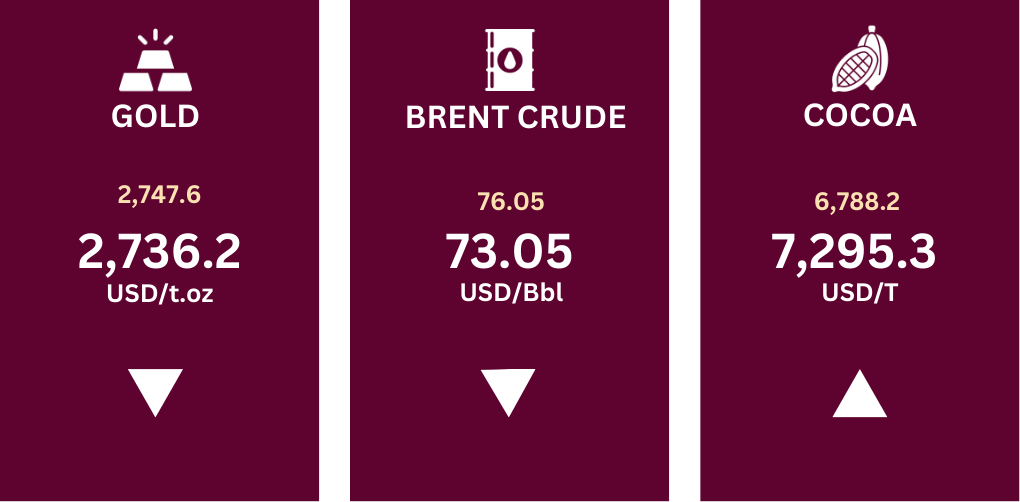
Source(s): Trading Economics
CURRENCY MARKET
The Ghanaian cedi has generally depreciated, showing slight declines against major foreign currencies. The exchange rate against the US dollar shifted from GHS 16.15 to GHS 16.30. Similarly, the cedi weakened slightly against the euro, with the EUR/GHS rate increasing from GHS 17.46 to GHS 17.69. Additionally, the GBP/GHS rate rose marginally from GHS 20.96 to GHS 21.11.

Source(s): Bank of Ghana

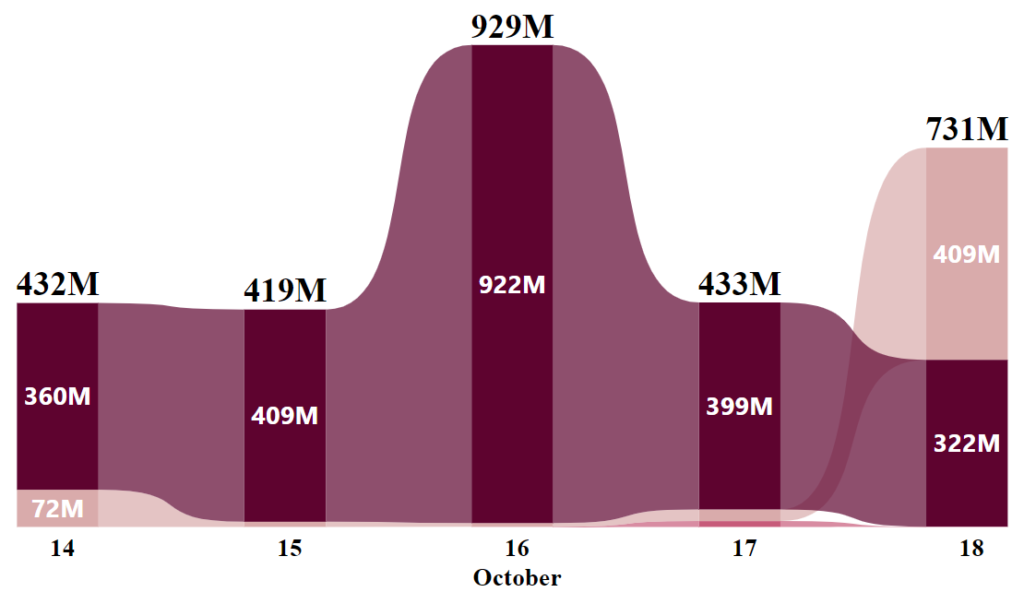
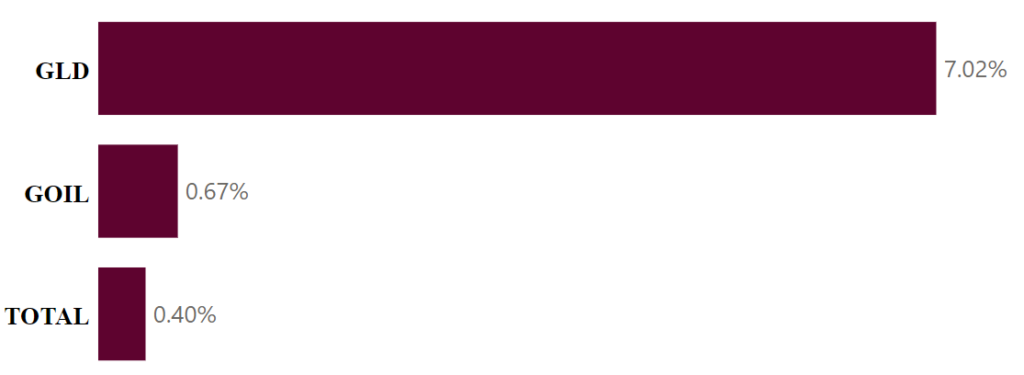
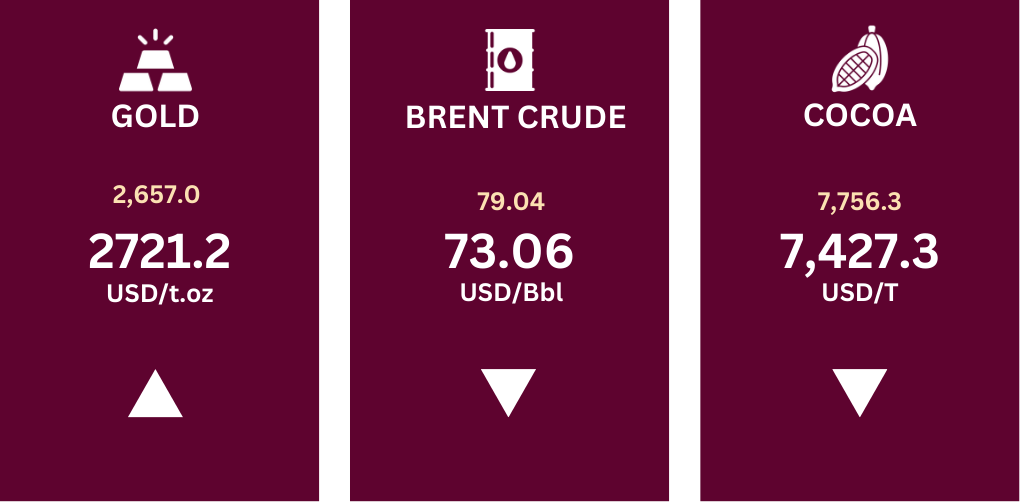
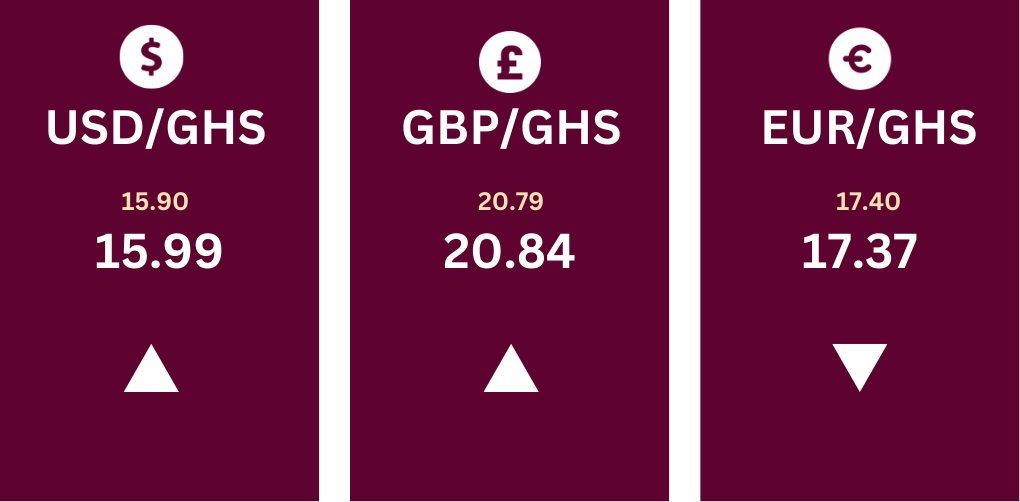
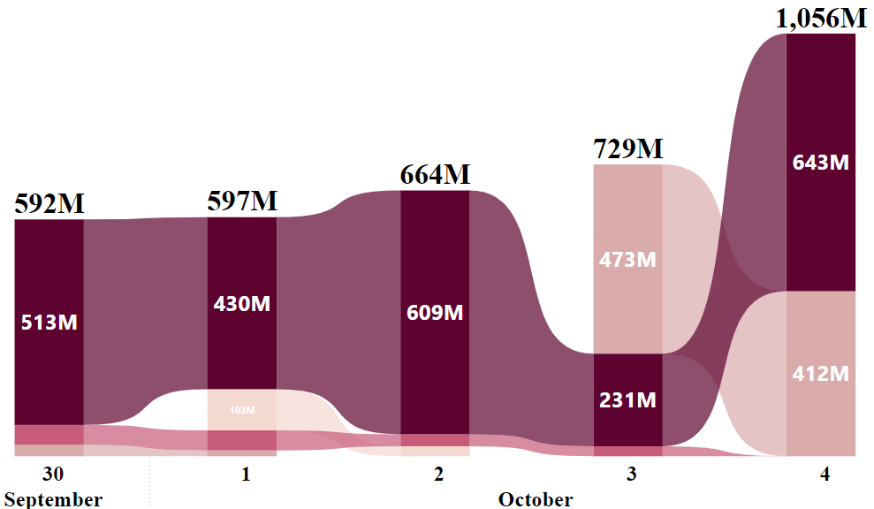
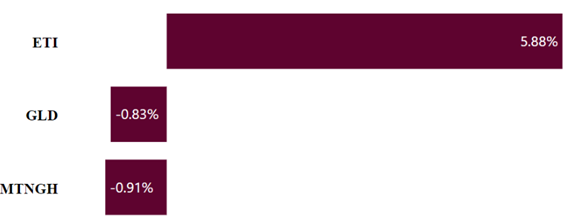
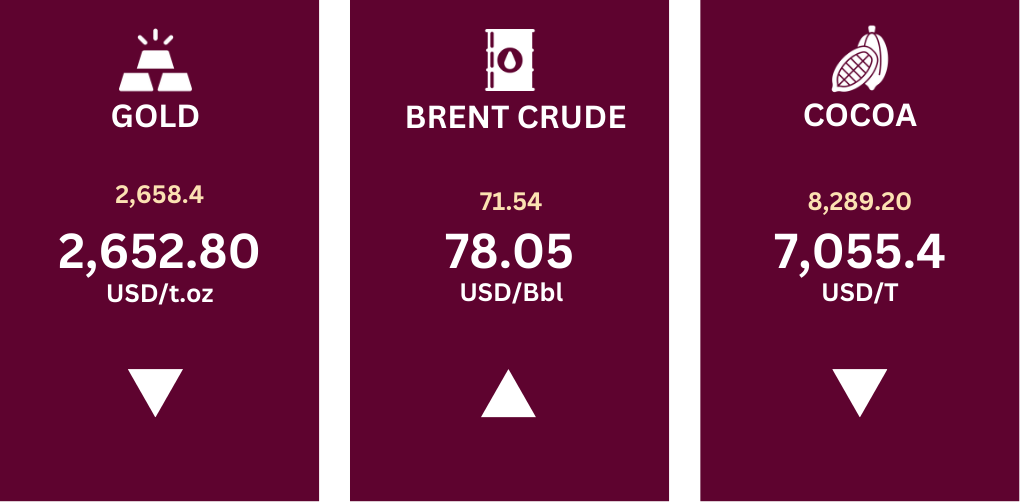 Source(s): Trading Economics
Source(s): Trading Economics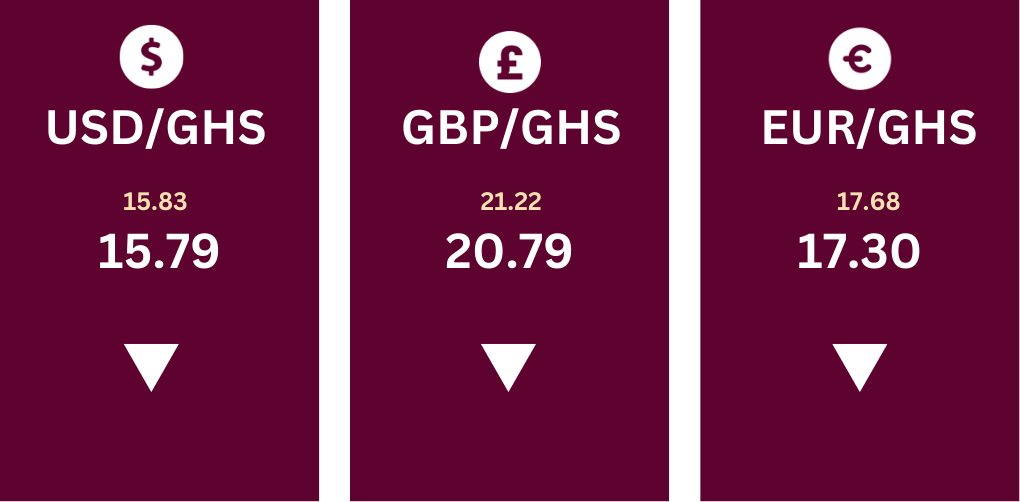
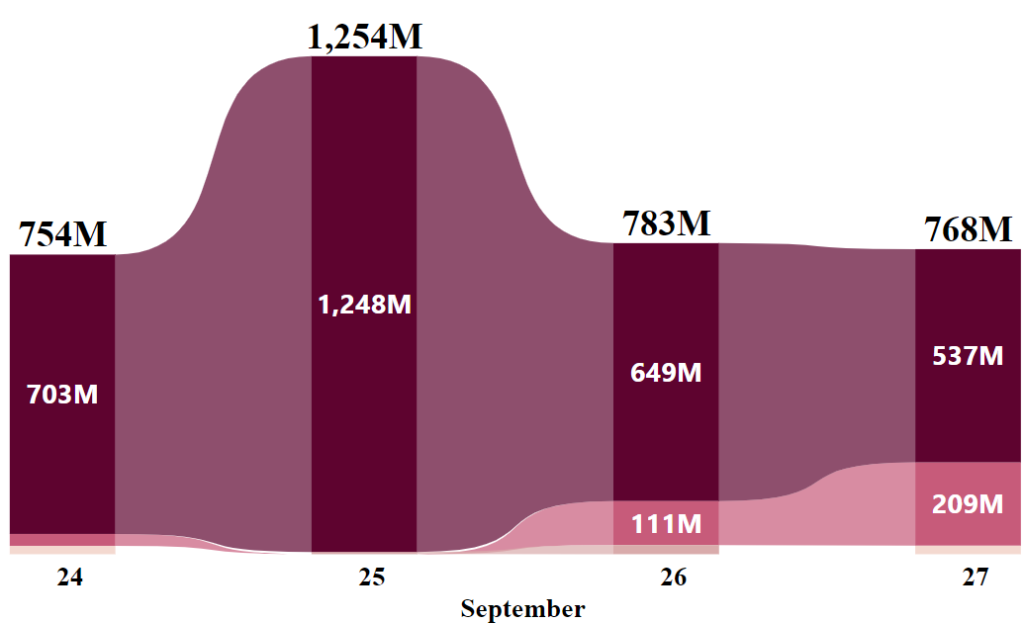
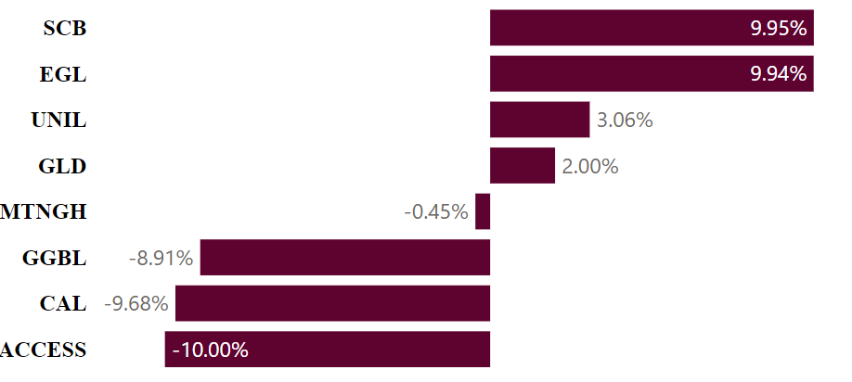
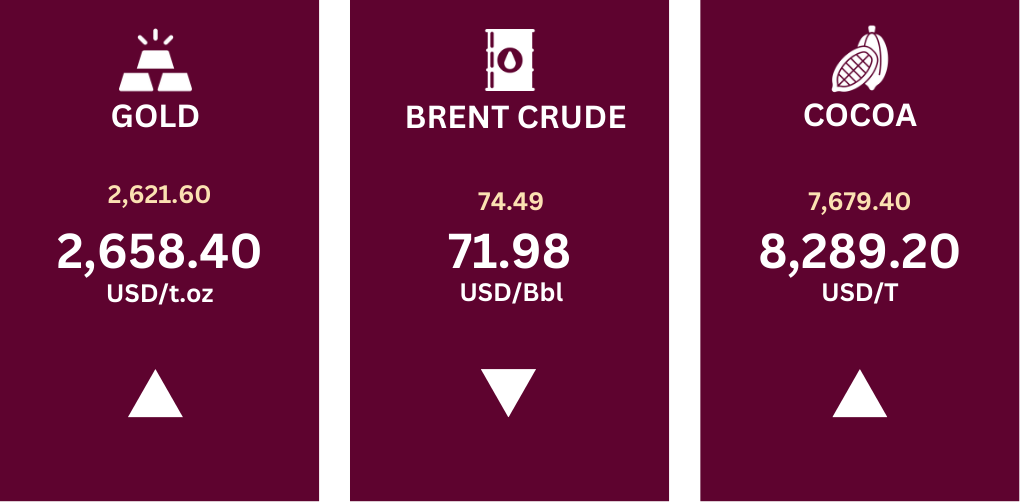
 Source(s): Bank of Ghana
Source(s): Bank of Ghana